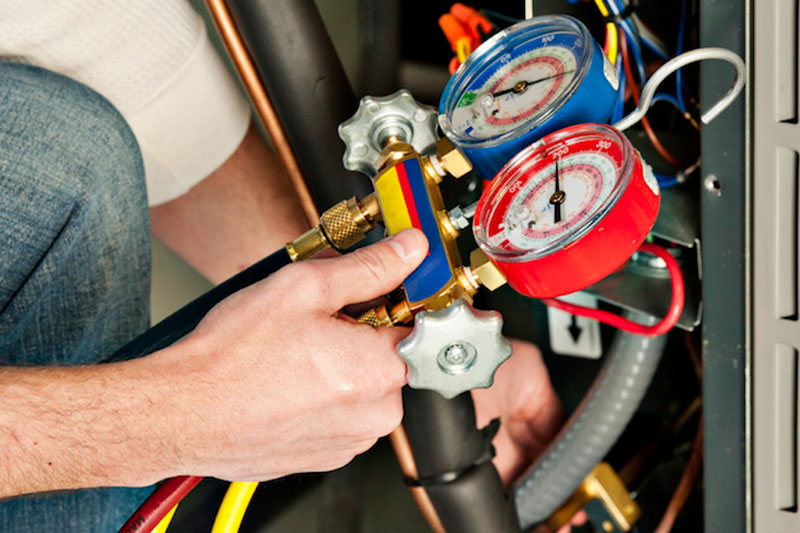
You might not think often about how your air conditioner works, but it depends on refrigerant to keep your home cool. This refrigerant is subject to environmental rules, because of the chemicals it contains.
Based on when your air conditioner was installed, it may use R-22, R-410A or R-32 refrigerant. We’ll go over the differences and which air conditioner refrigerants are being phased out in East Bernard, as well as how these phaseouts affect you.
What’s R-22 and Why Is It Phased Out?
If your air conditioner was installed before 2010, it probably has Freon®. You can learn if your air conditioner contains it by contacting us at 979-335-4262. You can also examine the name plate on your air conditioner condenser, which is found outside your home. This sticker will have details on what model of refrigerant your AC has.
Freon, which is also known as R-22, contains chlorine. Scientists consider this chemical to be bad for the earth’s ozone layer and one that leads to global warming. The Environmental Protection Agency, which controls refrigerants in the United States, banned its production and import in January 2020.
Should I Replace My R-22 Air Conditioner?
It differs. If your air conditioning is running as designed, you can continue to keep it. With routine air conditioner maintenance, you can expect your AC to run around 15–20 years. However, the Department of Energy notes that replacing a 10-year-old air conditioner could save you 20–40% on yearly cooling bills!
If you don’t get a new air conditioner, it might lead to difficulties if you require air conditioning repair down the road, specifically for refrigerant. Repairs may be more expensive, since only reduced amounts of recycled and reclaimed R-22 is accessible.
With the end of R-22, many new air conditioners now rely on Puron®. Also referred to as R-410A, this refrigerant was developed to keep the ozone layer strong. Since it requires a different pressure level, it doesn’t work with air conditioners that use R-22 for cooling.
However, Puron still has the likelihood to contribute to global warming. As a consequence, it may also sometime be discontinued. Although it hasn’t been communicated yet for residential air conditioners, it’s likely sometime this decade.
What Refrigerant Will Take Over R-410A?
In preparation of the discontinuation, some manufacturers have initiated using R-32 in new air conditioners. This refrigerant is classified low for global warming likelihood—around one-third less than R-410A. And it also lowers energy consumption by approximately 10%, according to the Intergovernmental Panel on Climate Change’s Fourth Assessment Report. That’s savings that could be sent on to you through your utility expenses.
E.B. Air Can Provide Support with All Your Air Conditioning Needs
In brief, the modifications to air conditioner refrigerant probably won’t impact you a whole lot until you require repairs. But as we talked about earlier, refrigerant-related repairs can be more expensive due to the low amounts that are accessible.
Aside from that, your air conditioner frequently breaks down at the worst time, often on the warmest day when we’re receiving many other appointments for AC repair.
If your air conditioner requires a phased out refrigerant or is getting old, we suggest getting an up-to-date, energy-efficient air conditioner. This provides a trouble-free summer and may even lower your cooling bills, especially if you get an ENERGY STAR®-rated air conditioner. Plus, E.B. Air has many financing solutions to make your new air conditioner even more affordable. Contact us at 979-335-4262 to start now with a free estimate.
